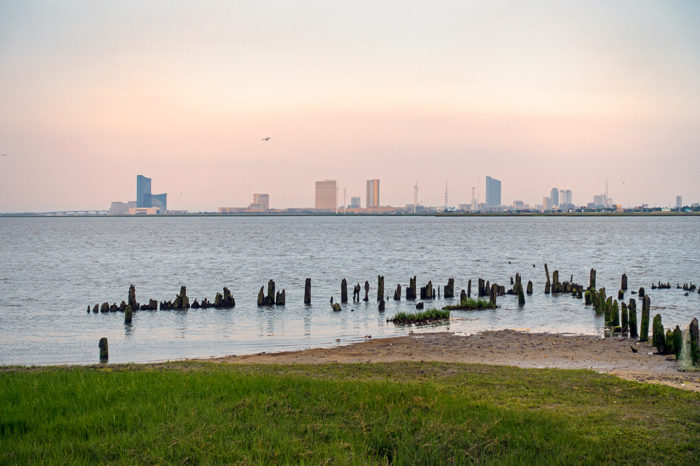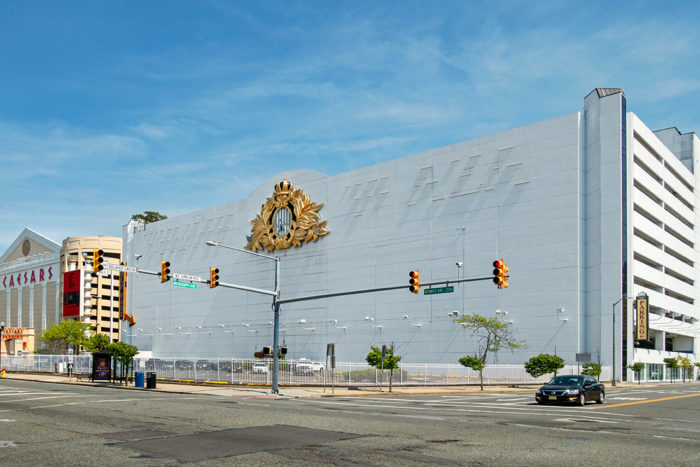I returned to the scene of the crime the other day — Atlantic City that is — where I documented the legacy of Donald Trump’s failed casinos. The city skyline can be seen at a distance from the Garden State Parkway, a row of towers hovering above Absecon Bay. At a glance, it could be Miami Beach, but one swiftly becomes aware of the difference once over the bridge and onto the ragged streets of the city.
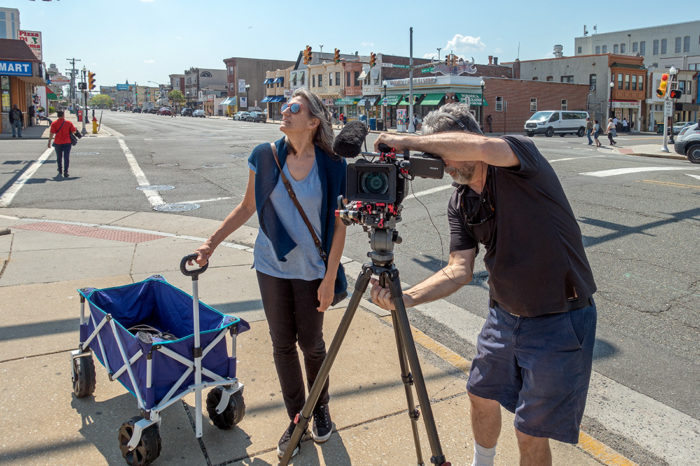
Susan Wallner, producer, on the street in Atlantic City — © Brian Rose
I was traveling with a TV crew doing a piece about my book for a show called State of the Arts, which looks at creative life in New Jersey and airs on public television. As a photographer, I am usually looking through the camera, but having done a lot of interviews and presentations in recent years, I’m not too uncomfortable on the subject side of the camera. We visited various locations around Atlantic City where my book images were made, wheeling around a little cart containing camera gear, and occasionally jumping into an SUV when the distances were too far to walk.
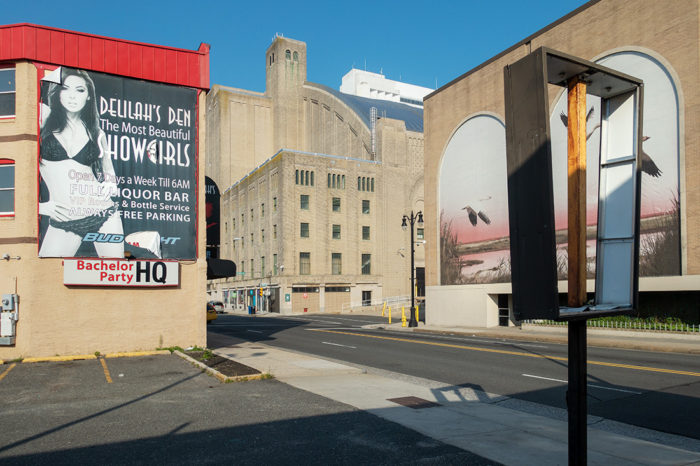
Pacific Avenue, Atlantic City — © Brian Rose
On this bright sunny day in mid-May, Atlantic City appeared, at first, rather upbeat compared to the mood of the pictures in my book. But that cheeriness soon was dissipated by a rather threatening individual, tall and muscular and obviously high as a kite, who wanted to make sure we weren’t photographing him. And then a man came up who said he was running for city council, pointing to a storefront with his name displayed on it, and I asked him about the current mayor who recently got into a fistfight at 2 am in the parking garage of one of the casinos. He said he was a crook who had to go. Which reminded me that Atlantic City’s history has been rife with various kinds of crooks at all levels, from drug addicts to mayors, from numbers runners to mafioso, from party bosses to casino tycoons. That’s why were here. The biggest conman of them all, Donald Trump, had come and gone, and was now scamming the entire country.
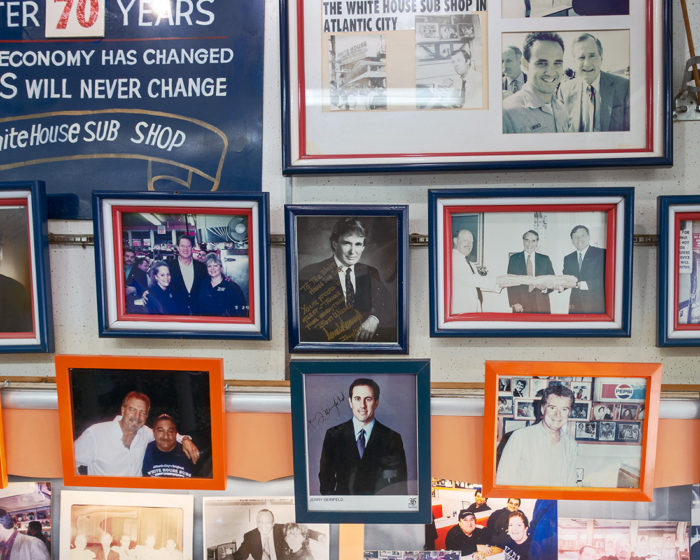
The White House Sub Shop celebrity wall — © Brian Rose
We went to lunch at The White House Sub Shop, which features a portrait of Donald Trump on its celebrity wall with an inscription and signature in gold ink. It’s a younger, somewhat raffish Donald in the photo, and one is reminded that Trump was the most important figure in this town for more than two decades. The White House website has a menu for its outlet in the Hard Rock Casino, which took over the Trump Taj Mahal, stripping off the onion domes and minarets, replacing the faux Indian/Russian theme with electric guitars. If you click on the link for the Hard Rock White House, you go to a menu that still says Trump Taj Mahal. It’s been several years since the final departure of Trump from Atlantic City, but his ghost still haunts the place.
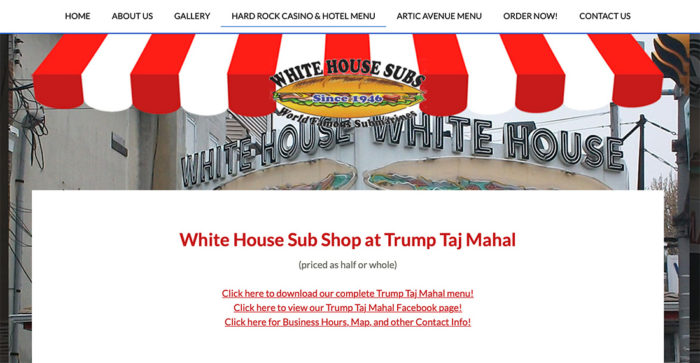
The White House menu/Hard Rock Casino — © Brian Rose
Just a block from the White House there’s a vast expanse of blank wall festooned with a golden cartouche, which was once accompanied by a giant red Trump Plaza sign. All the Trump logos have been removed, but you can still just make out the letters for Trump Plaza formed by the brackets embedded in the wall. I call it Trump’s wall.
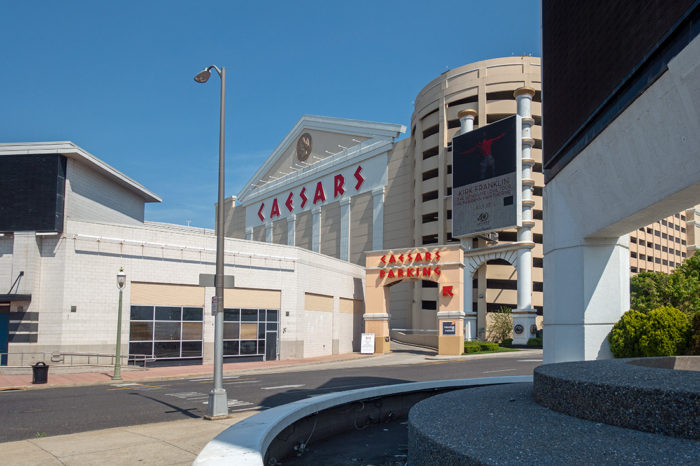
Caesars parking structure — © Brian Rose
Next to the abandoned Trump Plaza is Caesars, which is still going strong among the casinos that front the boardwalk. I’m often asked in interviews what has changed in Atlantic City since I finished making the photographs for the book, and I have to remind them that the most recent images were done only last year. Not much has changed since I started the project in November of 2016, just a few weeks after Trump’s election.
The official boosters of Atlantic City have been touting the city’s comeback now that the Trump Taj Mahal and the Revel have reopened under new owners. But the reality is that Atlantic City remains a one-industry town, and the basic equation between the glitzy casinos and the impoverished city remains unchanged. I liken the gargantuan out-of-scale casinos to the steel mills that used to hover over rowhouses in old factory towns. The casinos are an extreme example of the industrialization of tourism. The steel of yesteryear built America’s infrastructure, which is now crumbling, while the casinos offer entertainment, and the money gets shipped straight to Wall Street. Or into the pockets of grifters like Donald Trump.
